Auctions
A Late Picasso ‘Musketeer’ Leads a Healthy $206 Million Impressionist & Modern Sale at Christie’s London
Picasso's painting of a musketeer with a nude woman sold for £13.7 million.
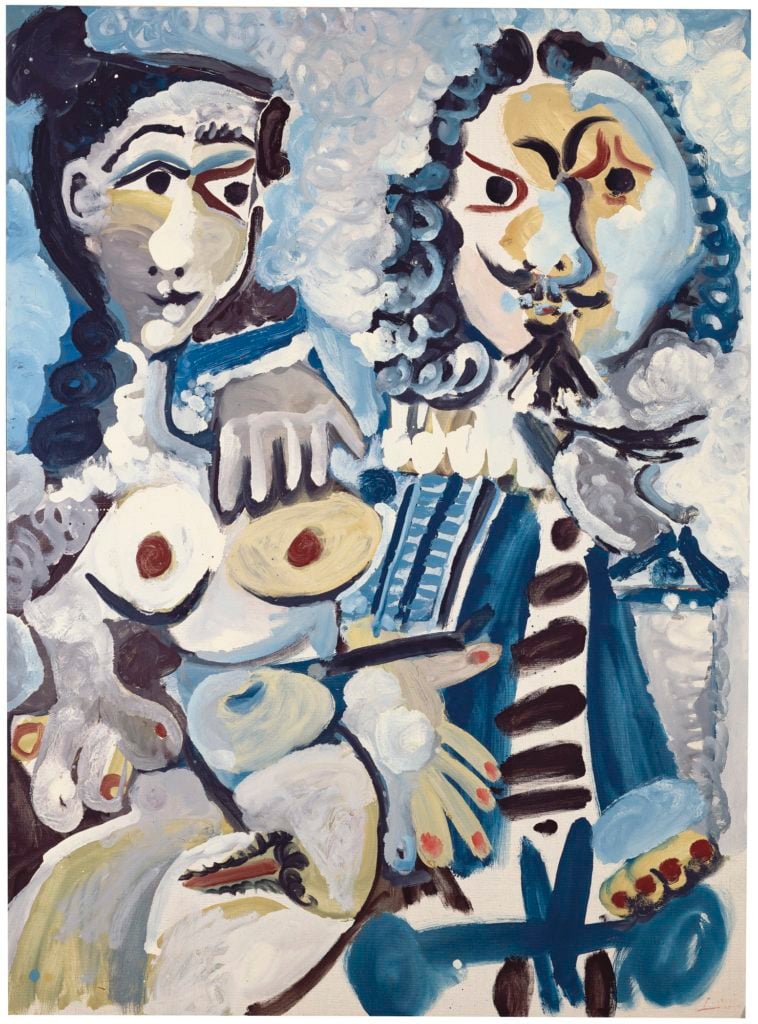
Picasso's painting of a musketeer with a nude woman sold for £13.7 million.

Colin Gleadell

On a chilly, snow-spattered evening, Christie’s kicked off a fortnight of auctions in London that are expected to collectively generate as much as £782 million ($1.1 billion). If achieved, it will be a record for a series of Impressionist and Modern and contemporary art sales in London, where a peak of £709.5 million ($1.2 billion) including premiums took place in February 2014.
Aiming high—and without regard for anyone’s dinner plans—the house piled 97 lots into their evening sale. In front of the packed room, in which many had attended in order to catch a preview of the Rockefeller treasures that will be sold later this spring in New York, the sale realized a healthy £149.6 million, squarely within its estimated total of £122 million-£167 million. (Prices include premium, estimates do not.)
The total was Christie’s second highest in this category for a London sale and included £36 million from a catalogue of 34 Surrealist works. Twenty-two percent of the total lots failed to sell.
A modest four lots were guaranteed in the Impressionist and Modern section, including the top two by value. One of Picasso’s many late musketeer paintings sold for £13.7 million (with a £12 million low estimate). The buyer was Harry Smith, chairman of the London-based art advisors and valuers Gurr Johns. It last appeared at auction in 2007, when it sold for £6.8 million. Smith then went on to buy all seven Picassos in this section of the sale, spending more than £40 million of his client’s money and outbidding challengers from Asia, and the Acquavella and Lefevre galleries—all without ever breaking into a smile. But strangely he left before the Surrealist sale, in which there were other Picassos.
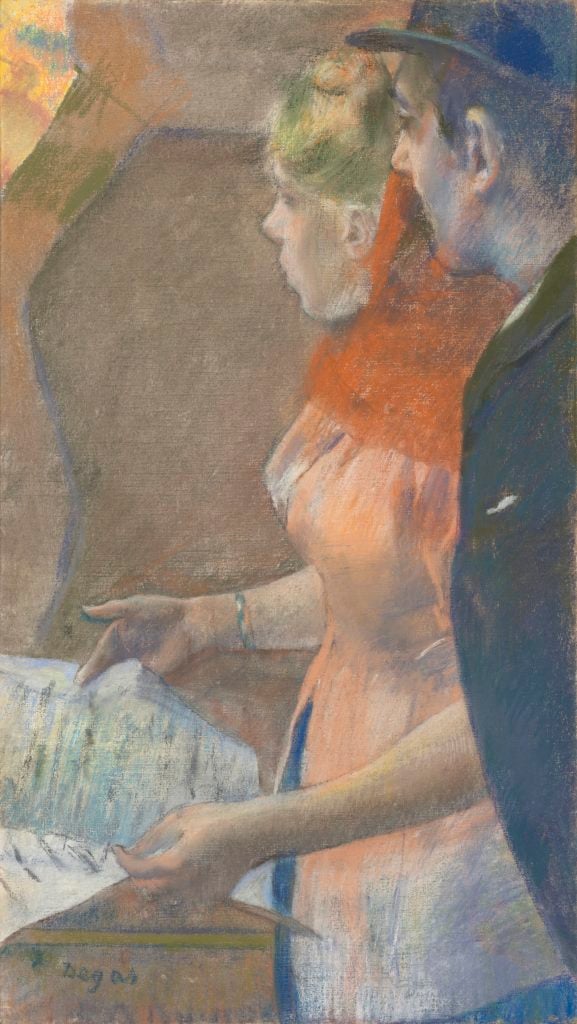
Edgar Degas, In the Wings (1982-85). Courtesy of Christie’s Images, 2018.
The second top lot, Edgar Degas’s theatrical scene In the Wings (1882-85), had been bought in Paris in 1997 for £2.5 million, doubling its estimate. Now guaranteed with an £8 million low estimate and, although not designated as such in the catalogue, known to be the property of British billionaire collector Lord Graham Kirkham, it sold apparently to the third-party guarantor without competition for £9 million. A sale nonetheless.
Unguaranteed was Monet’s rapturous study in green, blue, and pink, Prairie à Giverny, from 1885. The Scottish collector Herbert Dunsmuir purchased it in 1951 for £1,850 and passed it down to his descendants, one of whom is James Knox, the former managing director of The Art Newspaper. This evening it sold below estimate for £7.5 million, but realized an average price increase of 13 percent each year for 67 years, which would have warmed the cockles of the old Scotsman’s heart.
An unremarked aspect of this sale was the group of works from Holland’s Triton collection. It wasn’t long ago that Triton was in the news when several of its valuable paintings were stolen from an exhibition at the Kunsthal in Rotterdam. Some, like a tender Lucian Freud portrait of a young, terminally ill woman have never been recovered. The five paintings in this Christie’s sale were all included in the Rotterdam exhibition, but were too large to fit into the thieves’ getaway bags.
Leading the bunch was a verdant Monet landscape of Vétheuil (1879), which sold above estimate to art advisor Sarah Pearce, who bid against an Asian phone buyer. Asian bidding accounted for two other Triton lots—one paying a record £525,632 for a work on paper, Jan Toorop’s Faith and Reward (1902). The pastel had previously been auctioned in Germany in 2000 for just £30,000.
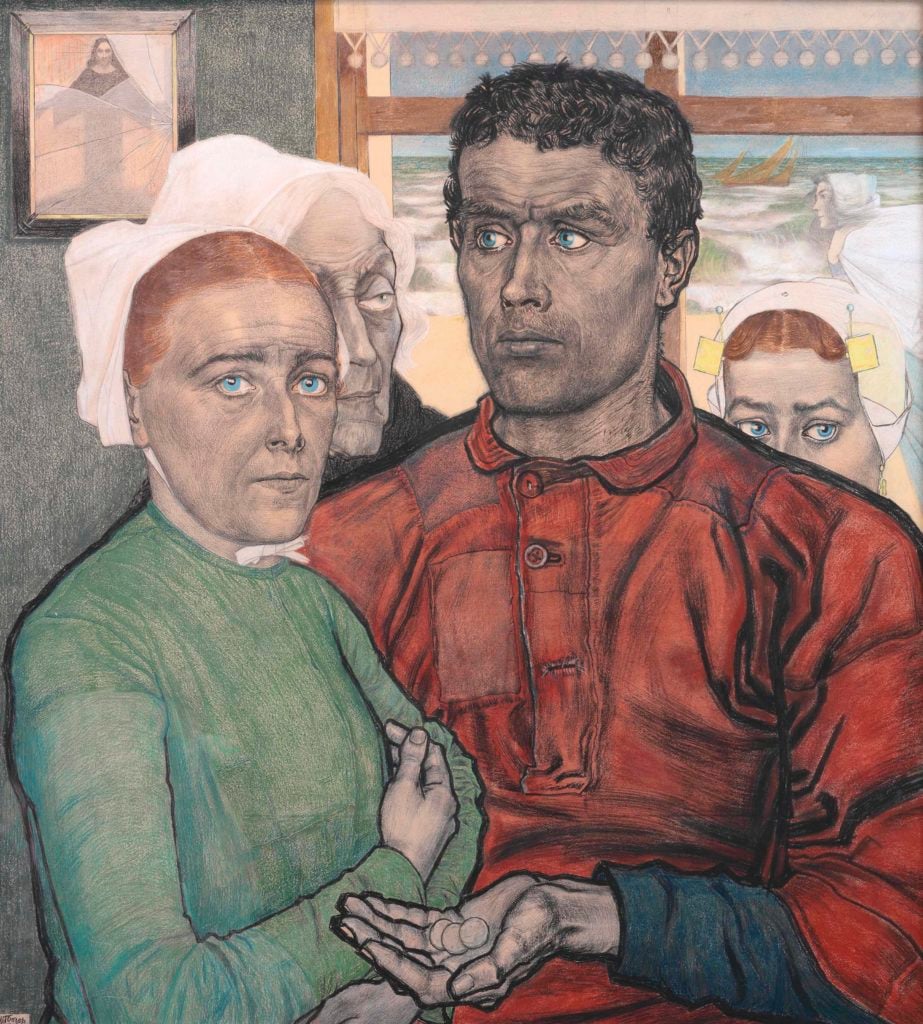
Jan Toorop, Faith and Reward (1902). Courtesy of Christie’s Images, 2018.
There were only a small number of record prices, all for great examples by artists who rarely make headlines. Notably, the Russian-born Constructivist sculptor Antoine Pevsner, whose flattened cones of painted copper and brass (around 1939) sold to advisor Thomas Seydoux, who frequently buys for Russian collectors, for £788,750.
A gem of a collection was described by Christie’s as “The Eye of the Architect.” Although not named by Christie’s, that architect was the Austrian social-housing genius Harry Gluck, who died just over a year ago. Gluck lived modestly in a small apartment which he studded with small masterpieces after he became successful. At the Impressionist and Modern sale, works by Picasso, Léger, and Morandi all sold within or above estimate, with a mechanistic canvas by Léger, L’Usine (1918), selling to advisor Wentworth Beaumont (bidding against Alex Corcoran of Lefevre gallery) for £2.2 million.
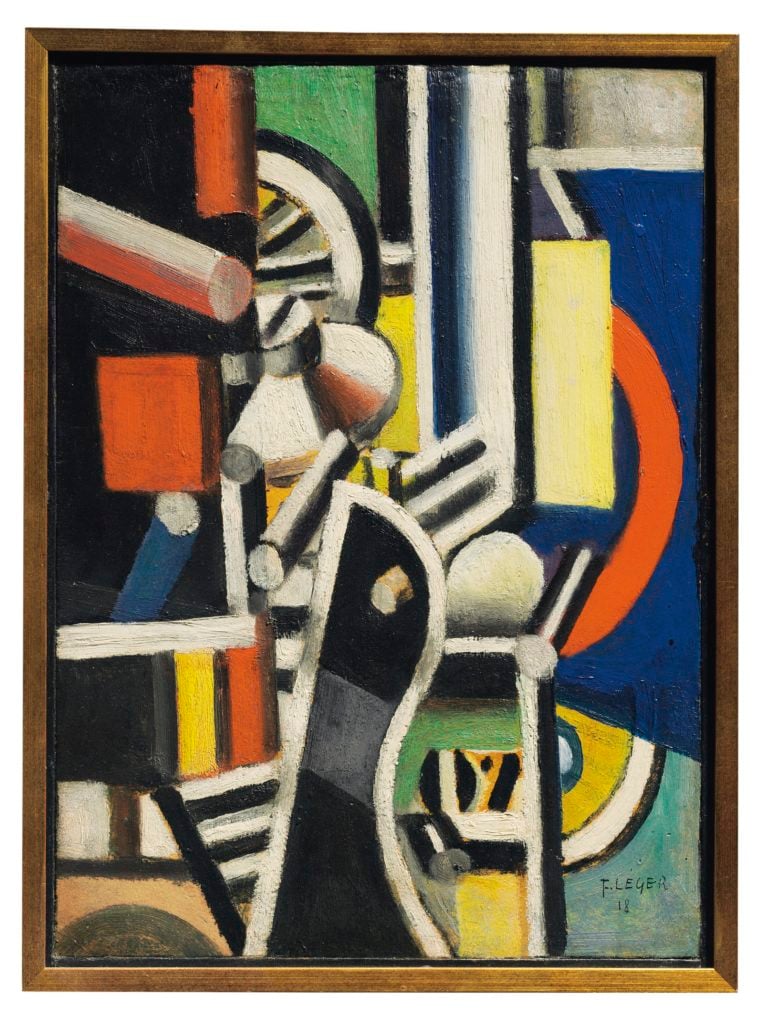
Fernand Léger, L’usine or Motif pour le moteur (1918). Courtesy of Christie’s Images, 2018.
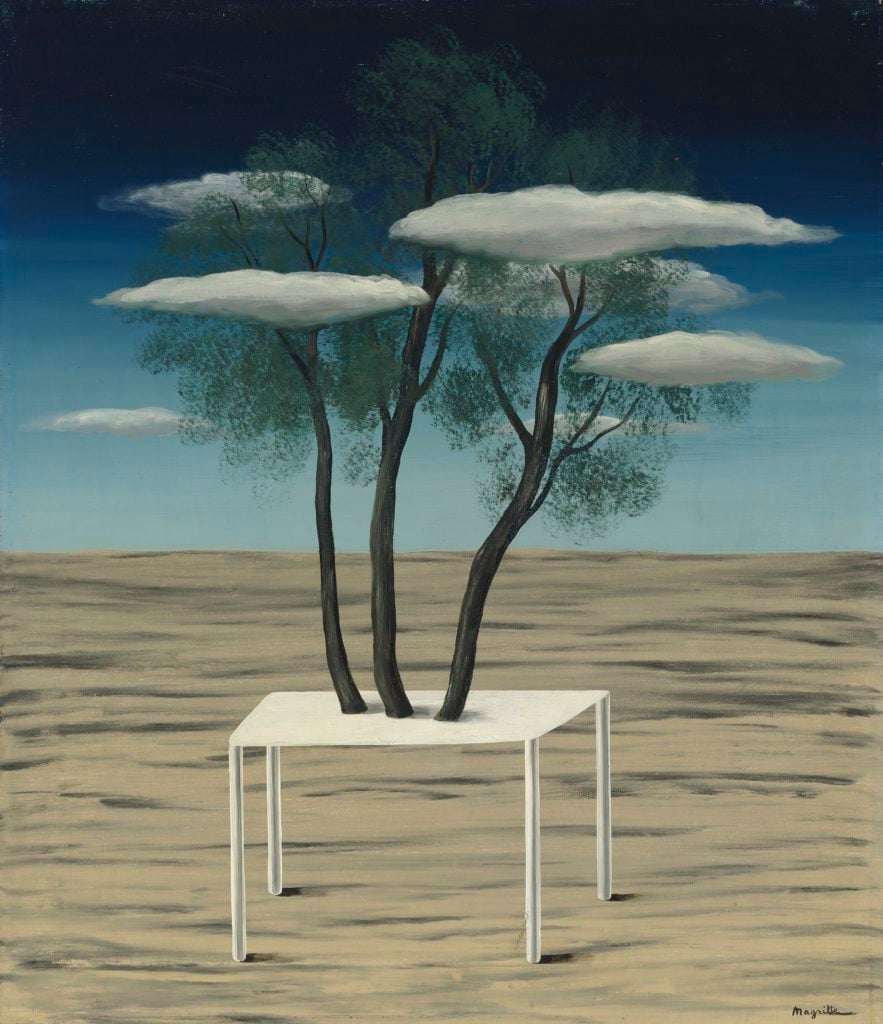
René Magritte, L’Oasis (1926). Courtesy of Christie’s Images, 2018.
Also of interest was a sofa designed by Salvador Dalí in the shape of actress Mae West’s lips. One of the originals, made in the 1930s, has sold for £800,000, but this was one of several later versions, from 1974, which have never sold for much. Although Christie’s has sold all the original Dalí “Lips” sofas that have come to market, there were no takers for this one, which had an overly optimistic estimate of £150,000.
The sale ended with a suitably British flourish when Artefact, a 1937 painting by Roland Penrose, co-founder of London’s Institute of Contemporary Arts, sold for a record £75,000 to a Russian bidder. The seller was American artist Max Seidenfeld.